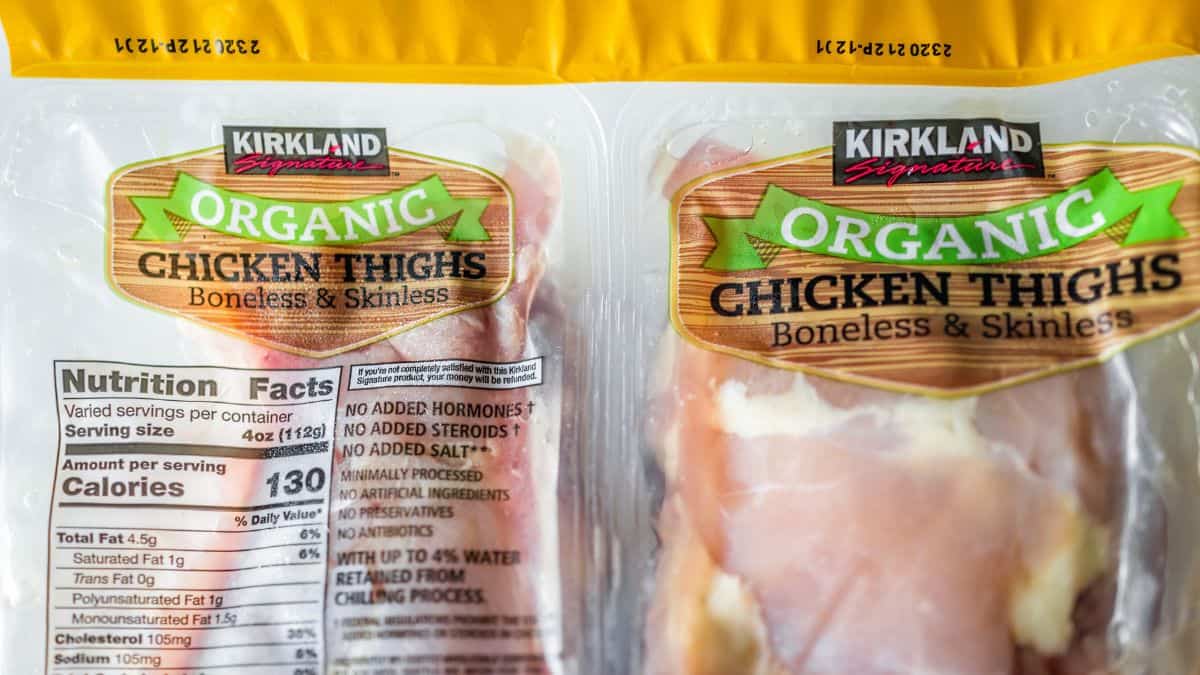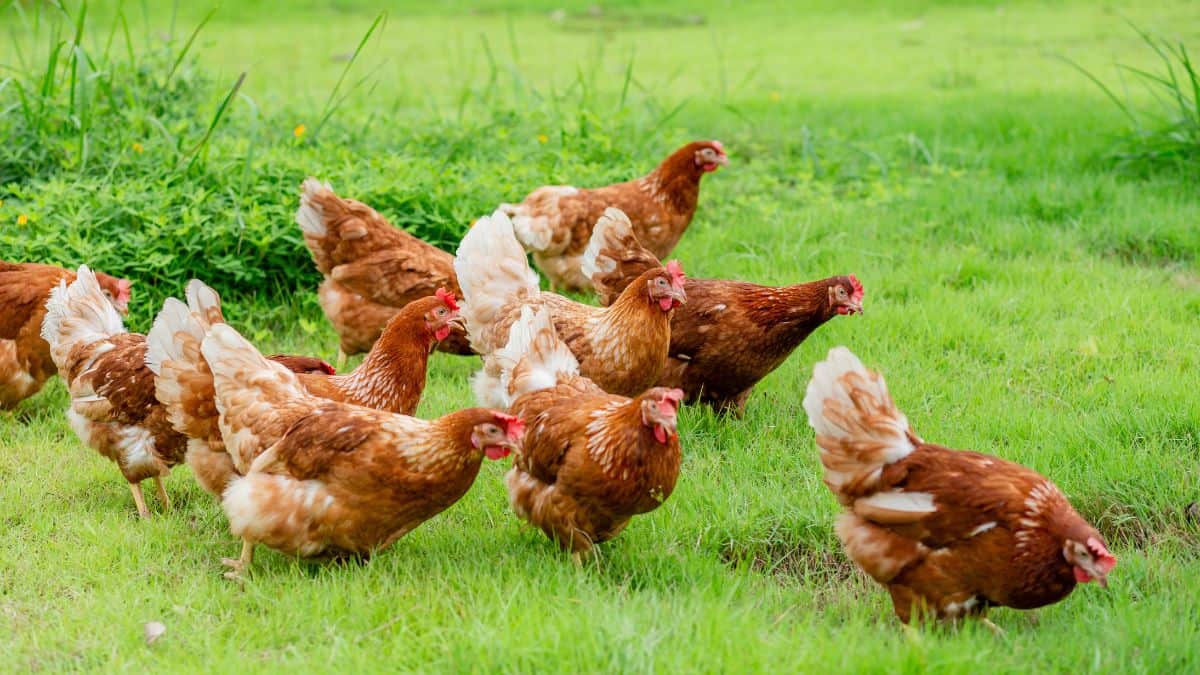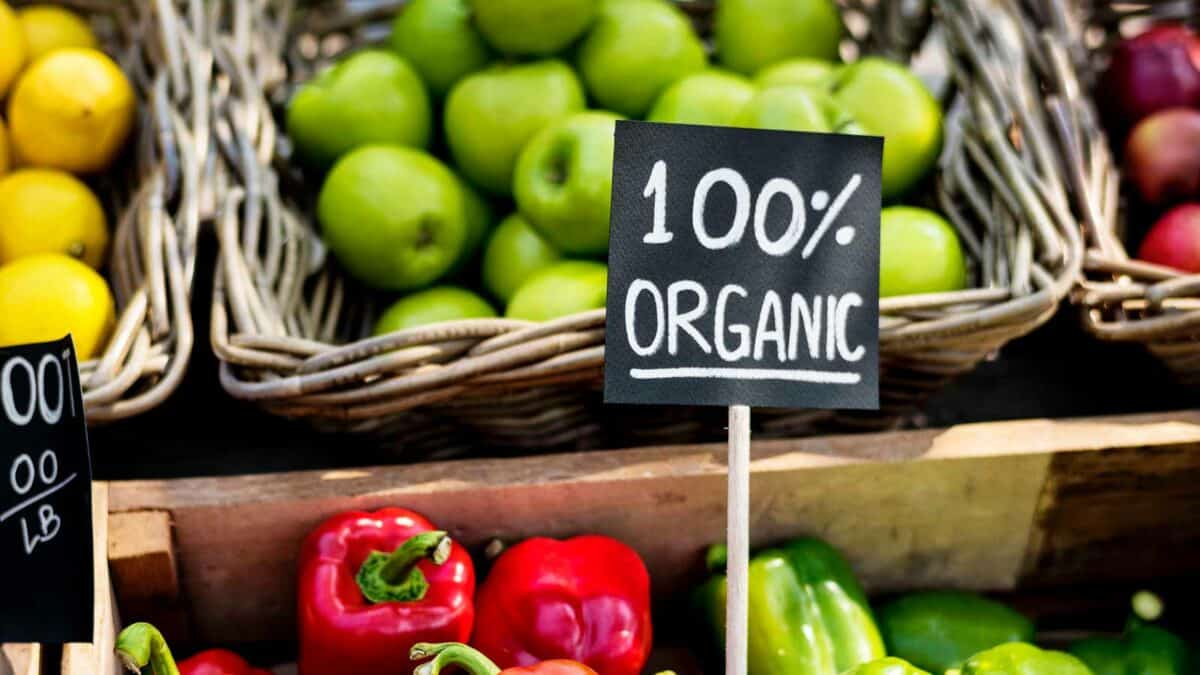Navigating the labels on chicken at the grocery store can be confusing. With so many different claims, it’s hard to know what’s real and what’s just clever marketing. Let’s cut through the nonsense and get to the truth. Some labels are pure fluff, while others provide important information about what you’re eating. If you’ve ever stood in front of the chicken aisle with a confused look upon your face, here’s everything you need to know.
No Hormones or No Hormones Added


If you spot a chicken label flaunting “No Hormones” or “No Hormones Added”? Here’s a little food for thought: in the U.S., it’s actually illegal to use hormones in raising chickens and other poultry. So, this claim is more about marketing flair than factual differentiation. Whenever you see this badge of honor, take a peek at the fine print—you’ll likely find a disclaimer stating, “Federal regulations prohibit the use of hormones.” In essence, this label is like bragging about obeying the law. Neat, but not exactly a selling point when every chicken in the coop plays by the same rules.
Natural


When you see “Natural” emblazoned across a chicken package, it might feel like you’re choosing the cream of the crop especially since it’s usually accompanied by an idyllic farm setting painted on the packaging. But let’s unpack what it really means. According to the USDA, “Natural” signifies that the chicken doesn’t contain any artificial ingredients or added colors and underwent minimal processing. Sounds good, right?
But here’s the kicker: the label will often need to explain what “natural” entails, such as “no artificial ingredients” or “minimally processed.” While it does offer a glimpse into the chicken’s journey to your plate, don’t be fooled into thinking it’s the ultimate seal of approval. There are other labels out there that pack a more informative punch about what you’re really getting.
Free-Range or Free-Roaming


“Free-Range” or “Free-Roaming” might conjure images of chickens frolicking in vast, open fields, but the reality behind this label might be a tad less picturesque. To slap this label on their packaging, producers only need to prove to the USDA that their chickens have had access to the outdoors. However, the devil is in the details—or lack thereof. The term doesn’t specify how large this outdoor area needs to be or how much time the chickens actually spend there.
So, while it suggests a step towards animal welfare, it’s worth taking with a grain of salt. It’s a bit like saying you have a gym membership; it doesn’t mean you’re there pumping iron every day.
Cage-Free


Seeing “Cage-Free” on a chicken label might give you a warm, fuzzy feeling, thinking those birds had a bit more room to stretch their wings. But here’s the inside scoop: in the realm of chickens raised for meat in the United States, cage living is not a thing. That’s right, no meat chickens are doing time in cages, making this label a bit like celebrating the fact that fish swim. It’s essentially highlighting the baseline standard of the industry.
Vegetarian-Fed


“Vegetarian-Fed” might sound like a chicken’s diet has been carefully curated to align with the greenest of leafy ideals, but here’s a peck at the reality: chickens, by nature, are not strict vegetarians. In their happiest, scratch-around-the-yard state, they’re gobbling up bugs, grubs, and even the occasional unsuspecting frog.
So, while feeding chickens a vegetarian diet may seem like a step towards ethical eating, it’s actually a bit against their natural grain. And while this label tells you what the chickens ate, it doesn’t spill the beans on how they lived. So, falling for this marketing ploy, remember that a chicken’s dream diet includes more than just grains.
No Antibiotics Added or Raised Without Antibiotics


Choosing chicken labeled “No Antibiotics Added” or “Raised Without Antibiotics” does more than just tell you about the bird’s upbringing; it addresses a critical global issue: the fight against antimicrobial resistance (AMR). With AMR flagged as a major health threat, potentially causing up to 10 million deaths a year by 2050, opting for antibiotic-free chicken isn’t just about diet—it’s about making a responsible choice for public health. For added peace of mind, seek out the “USDA Process Verified” seal, confirming USDA oversight.
Organic


When you spot the “Organic” label on chicken, you’re seeing a badge that comes with stringent USDA-regulated standards. For a farm to earn this label, it’s not just about feeding the chickens organic feed; it’s a holistic approach. This includes banning antibiotics, growth hormones, genetically modified crops, and ensuring the feed is 100% organic without animal by-products. The land itself must be certified organic, adhering to rules that restrict certain pesticides.
I know this first hand living across the street from a small organic dairy farm who uses part of our land for hay. We had to certify that we had never sprayed any chemicals on land before he could agree to hay it.
While these chickens are guaranteed some outdoor time, the specifics vary. An interesting tidbit: smaller farms often embrace organic principles wholeheartedly but might skip the official certification due to resource constraints. A chat with local farmers can offer insights into their practices, giving you the real scoop on what “organic” means beyond the label.
Pasture-Raised


While “Pasture-Raised” on its own might leave some room for interpretation due to the lack of federal standards, pairing it with certifications from trusted organizations transforms it into a powerful promise of welfare and space for chickens. Look for endorsements such as “Animal Welfare Approved,” “Certified Humane,” or “Global Animal Partnership” alongside the pasture-raised label to ensure the chickens enjoyed a genuinely better quality of life outdoors. These partnerships indicate not just ample space, but a commitment to the animals’ wellbeing throughout their lives.
Air-Chilled


“Air-Chilled” is a label that might catch your eye for a reason that goes beyond animal welfare or feed: it’s all about the quality of your chicken on the plate. Unlike the common practice of dunking chicken in icy water baths after slaughter, air-chilled chickens are cooled with blasts of cold air. This method doesn’t just elevate the chicken’s texture and flavor; it makes it a superior candidate for soaking up marinades and staying juicy without getting soggy.
Plus, air chilling reduces the risk of cross-contamination, making your meal safer and tastier. It’s a detail that might not seem big, but it makes a world of difference in your cooking and this label is becoming increasingly popular lately in stores.
Non-GMO Project Verified


When you see “Non-GMO Project Verified” on a chicken label, it’s signaling something special about the bird’s diet. This label, backed by a nonprofit dedicated to verifying non-GMO food, means that the feed the chickens consumed was free from genetically modified organisms. While the chickens themselves aren’t genetically modified, their feed often is, which can contribute to concerns like increased pesticide use. If you’re wary of GMOs for any reason, this seal is one to watch for.
Remember, though, not all non-GMO claims are created equal—look for the official Non-GMO Project Verified seal for genuine assurance. And a bonus tip: “Certified Organic” also guarantees a GMO-free feed, covering all your bases in one go.
Animal Welfare Approved, Certified Humane, and Global Animal Partnership’s Animal Welfare Certified


For those passionate about the welfare of chickens raised for meat, three labels stand out as gold standards:
- Certified Humane
- Animal Welfare Approved
- Global Animal Partnership’s Animal Welfare Certified.
Certified Humane ensures chickens have the space to move naturally and are raised without growth hormones or antibiotics. Animal Welfare Approved by A Greener World sets high bars for outdoor access and natural behaviors, aligning closely with consumer expectations for truly humane treatment. The Global Animal Partnership offers a tiered certification, with six levels that detail everything from basic care to the ideal “Entire Life on Farm” standard. Remember, vague “humane” claims don’t cut it. For genuine assurance, these three certifications are the ones to trust.
13 Reasons Keeping Chickens Is More Awesome Than You Think


Ever thought about keeping chickens but dismissed it as too much work or just plain weird? Think again! Keeping chickens is way more awesome than you might believe. From fresh eggs every morning to the endless entertainment of watching them strut around, these feathered friends bring a lot to the table (literally and figuratively). Plus, they’re surprisingly low maintenance and can even help out with your garden.
Read it Here: 13 Reasons Keeping Chickens Is More Awesome Than You Think
5 Reasons To Go Organic And 5 Reasons It’s Just Hype


Deciding whether to go organic isn’t just about personal health—it’s also about considering broader environmental and economic impacts. This article takes a no-nonsense look at the real benefits and downsides of organic food. From the health of the soil to the health of your wallet, we’re laying out what you need to know to make an informed decision.
Read it Here: 5 Reasons To Go Organic And 5 Reasons It’s Just Hype
*Select images provided by Depositphotos.
Gina Matsoukas is an AP syndicated writer. She is the founder, photographer and recipe developer of Running to the Kitchen — a food website focused on providing healthy, wholesome recipes using fresh and seasonal ingredients. Her work has been featured in numerous media outlets both digital and print, including MSN, Huffington post, Buzzfeed, Women’s Health and Food Network.


